- Home
- Gustave Flaubert
Three Tales Page 2
Three Tales Read online
Page 2
Within forty years, the new science of psychoanalysis would confirm Flaubert's sketchmap of the unconscious.
The younger son of a renowned man of science, Flaubert had long cultivated a mildly perverse taste for the supernatural. He acquired it in his earliest years, before he could read, from his peasant-nursemaid, Julie. Though regarded as a simple daughter of the people, Julie was exceptionally intelligent and well read. Fortunately for the child in her care, she was also more spontaneously affectionate than his natural mother, the melancholy Madame Flaubert. Julie sat the boy by the kitchen fire and told him wonderful stories, stories that took him far away from Rouen, back into an older rural world. Here was a night-world where the giant Gargantua walked the earth, where druid stones came alive and great snakes lay coiled asleep in dark pools. Julie knew all about talking animals, elves and changeling children, goblins, werewolves, witches and – most memorable of all – decapitated saints, the kind that were found wandering along lonely country roads carrying their own heads in little baskets.
Here was something wonderful, something more nourishing than the desiccated rationalism that shaped all significant conversation within the municipal hospital, the Hôtel-Dieu, that temple of science where his father, the compassionate, omnipotent, Monsieur Flaubert, presided so illustriously.
Though he avoided writing about childhood, Flaubert never abandoned the high kingdom of miracles and prodigies that had so precociously excited his imagination. ‘Early impressions‘, he wrote, ‘never fade… We carry our past within us; all our lives we still smell of our nurse's milk.’4 The memory of Julie, the generous smiling story-teller who warmed the cold hours of his boyhood, lay preserved in his mind. Loyal to these early visions, Flaubert accumulated a vast leisurely adult erudition on the subject of saints, heretics and goddesses. The supernatural was his second home, though he arrived there through a door marked science.
Imagination, for all its idle splendours, doesn't pay the bills. The great city of Rouen was energetic testimony to this simple fact. As the younger son of a great man, Gustave Flaubert was expected to add lustre to the family name. The medical profession had already been allocated to Achille, the eldest son. Gustave would therefore be directed into the study of the law. At this point, on the threshold of everything sensible, bourgeois and masculine, his problems began.
‘Studying Law‘, Flaubert soon complained, ‘leaves me in a state of moral castration which is almost inconceivable.’5 The phrase was not lightly chosen. As a young man, away from home for the first time, Flaubert was ‘imperiously possessed’ by the idea of castrating himself. ‘In the midst of all my vexation in Paris… I wanted to do it.’ He would stare at mutilated male statues in museums, struggling with the impulse to mutilate himself.6 He resisted the ‘mystic mania‘, as he called it, and chose instead to avoid ‘seeing women’, a resolution that lasted for several years.7
What was it, the problem to which castration seemed to be the imperative solution? We do not know, and nor did Flaubert. We do know that a traumatic experience of sacred horror is at the heart of his ‘exotic’ works. We may wonder at the mature artist's abiding impulse to play with fire. Flaubert's finest characters are visionaries, passionately materialized. They are not quite of this world, though the mud of the real will cling thick and heavy to their boots. Like their creator, they are pestered, tormented, amazed and bewildered by their visions. Unlike their creator, they are finally consumed by the power of what they see.
Flaubert improvised many ingenious solutions to this problem. In the middle of writing Madame Bovary, kicking against the constraints of the genre, he had envisaged ‘a large fantastical loudmouth metaphysical novel’8 which would prove that ‘happiness is in the imagination’. In real life the hero would be reviled, imprisoned, and ultimately thrown into a lunatic asylum; but in his imagined life he would achieve a triumphant serenity. The story would be called ‘La Spirale’. It evolved over many years, in the background, as ‘a novel about madness, or rather about the way in which you go mad’.9 Yet ‘La Spirale’ remained unwritten: ‘because it is a subject that frightens me, for health reasons, I shall have to wait until I am far enough away from those experiences to be able to induce them in myself artificially, ideally, and therefore without risk to myself or to my work.’10 A loudmouth metaphysical novel about madness would be too close to home.
Fear of madness had preyed upon Flaubert's mind ever since a singular episode that took place one evening in his student days. The story of that evening explains much of Flaubert's persistent interest in other worlds of experience, and it is offered here, as a biographical preface to his Three Tales.
One January evening (let the year be 1844) two young men were driving along a French country road in a lightweight two-wheeled cabriolet. Gustave Flaubert, the younger and the sturdier of the pair, was holding the reins. Sitting beside him was his slender, red-bearded elder brother, Achille, a man whom Flaubert rather disliked. The moonless winter night was unusually dark and the puddles in the ditches were growing a fragile skin of ice. ‘It was so dark,’ he said, ‘you couldn't even see the horse's ears’ – a real, cave-black, supernatural, nineteenth-century pre-electric dark, with only the light of a distant inn to dispel the perfect illusion of nothingness.
The little cabriolet turned a corner and the brothers heard a rumbling and a jingling coming towards them. It was the iron-bound wheels of a big wagon carrying a single night-lantern up in front. The bright flame of the lantern on the wagon moved slowly across their field of vision, away from the distant light of the inn. The conjunction of the two lights, near and far, moving and stationary, sparked something inside the skull of the big man holding the reins of the cabriolet. It was, he said, like an explosion behind his eyes, ‘like being swept away in a torrent of flames… sudden as lightning… an instantaneous irruption of memory… a letting go of its entire contents. You feel the images pouring out of you like a stream of blood… as if everything in your head is going off at once like a thousand fireworks.’11 Gustave Flaubert fell to the floor of the cabriolet and lay there as if he were dead. He was 22 years old.
His family hoped that it was all an accident, unlikely to happen again. But it was no accident. It came back. In the course of the next two weeks Flaubert had four further attacks. What had happened to him? What name could medical science give to the golden fire that had burnt such a dark hole in the fabric of his life? Was it epilepsy? Apoplexy? Hysteria? Or was it simply ‘nerves’?
For Flaubert himself, there was no word for it. ‘Never’, said his friend Maxime Du Camp, ‘did I hear him speak the name of his malady. He said, “my nervous attacks”, and that was all.’12 Such reluctance is not surprising. Epilepsy was not understood. The symptoms of the disease had been described in antiquity, by Hippocrates, but there was still no effective treatment for it. It was a hopeless, loathsome, incomprehensible thing and its victims were subjected to a drastic regime. In Flaubert's case, a device like a small tap, known as a seton collar, was attached to his neck to facilitate regular bleeding. Purgative mercury massages were applied. Alcohol, tobacco, caffeine and meat were forbidden. The patient was secluded and carefully watched over.
The treatment wore a rational modern disguise. Yet from beneath that disguise it spoke in the older language of religious symbolism. However unscientific to our eyes, it makes good sense if we consider it as a ritual of purification. Victim and family moved out to Croisset, a holy place beside a great river, thus escaping all the malignant impurities that hung in the air of the city. At Croisset the victim was symbolically cleansed of his pollution, through repeated washing, bloodletting and swimming.
Flaubert subsequently observed and described his nameless condition with great acuity. We might say, from the evidence of his letters, that he learnt to live with it, to inhabit it imaginatively as a unique province of his mind. Perhaps a name would have kept him out, discouraged him from undertaking that terrifying quest. Once he knew that he could survive the rec
urrent intimate disaster of the attack, he could begin to learn from it, even to experiment with it. His epilepsy, or rather what he did with what they called epilepsy, confirmed in him a curious early affinity for the most extreme varieties of religious experience, the ecstatic visions and the diabolical torments of the saints.
It was George Sand, Flaubert's generously sympathetic confidante, who urged Flaubert to make something of his sufferings. ‘Describe your martyrdom,’ she wrote in January 1875. ‘There is a fine book to be written there.’13 Reluctantly won over to the idea, Flaubert did not begin with a flamboyantly dramatic martyrdom – the obvious, fiery-torment, agony-in-the-desert variety. He had done that already, in The Temptation of Saint Antony. There was another kind of martyrdom, the slow stifling of the spirit, the quiet sinking into decrepitude. This was the modern martyrdom. He had, after all, recently witnessed the mental and physical dissolution of his mother during the final years of her life. He could feel in his own mind the first keen vexations of old age: his friends dying, his money disappearing, his house falling apart, his faculties decaying. Here was a subject close to home.
He had a clear sense of what he wanted his martyr-tale to be. Its ‘underlying humanity’14 would confound all those who had ever chided him for treating his characters sadistically. This time there would be no amputations, no arsenic poisoning, no flaying of captives, no dead babies (not in the first story, at least; there would be plenty of that sort of thing in the other two tales). This would be the intimate history of the love that never found an object. He would draw upon the scenes of his own early years: the seaside holiday landscapes, the memories of his younger sister who had died. He would borrow the forlorn, frozen egocentricities of his mother's lengthy widowhood. He would take the woman's part, as he had done once before, with Emma Bovary.
Feminization was much better than castration. It was reversible and it connected him to all that was most radically original in his own artistic personality. He would become a servant, pious, illiterate and loving. ‘The Story of a Simple Heart’, he explained,
is quite simply the tale of the obscure life of a poor country girl, devout but not given to mysticism, devoted in a quiet sober way and soft as newly baked bread. One after the other she loves a man, her mistress's children, a nephew, an old man she nurses, then her parrot; when the parrot dies she has it stuffed, and when she is on her deathbed she takes the parrot for the Holy Ghost. It is in no way ironic (though you might suppose it to be so) but on the contrary very serious and very sad. I want to move my readers to pity, I want to make sensitive souls weep, being one myself.15
Flaubert's denial of ironic intention is persuasive, but also amusingly devious. He wants to protect this icon of mother-love from attack, even though he knows it's a bit ridiculous. This makes for delicate tension in the texture of his story. The writing invites us to renounce the agreeable intellectual aggression that we call irony. Are we too clever, it asks us, to sit down quietly among the simple-hearted? Is their silence too much for us? Is our cherished irony just a bad habit? Is the head censoring the heart? Flaubert always leaves such questions unspoken, but they mark out a serious imaginative problem for realist art and for democratic politics. How can we represent the dispossessed, the illiterate and the powerless? Yes, we give them a voice. But whose voice is it to be? Their voice, or our version of their voice?
Flaubert had glanced at this problem once before. In the middle of Madame Bovary, there is a village agricultural show. The local elite are sitting up on the platform, announcing prizes. They summon before them ‘a little old woman’. For a lifetime of agricultural labour, she is to receive a silver medal. She is a vision of compliant servitude.
Then was seen stepping on to the platform a little old woman, moving timidly, and apparently cringing deep into her shabby clothes. On her feet she had great wooden clogs, and, around her hips, a large blue apron. Her thin face, swathed in a simple hood, was more creased and wrinkled than a withered russet apple, and from the sleeves of her red camisole there dangled a pair of long hands, with bony knuckles. The dust from the barn, the soda for washing and the grease from wool had made them crusted, cracked, calloused, so that they looked grimy even though they had been rinsed in fresh water; and, from long service, they stayed half unclasped, almost as though to set forth of themselves the simple testimony of so much affliction endured. A hint of monastic rigidity intensified the look on her face. No touch of sadness or affection softened that pale gaze. Living close to the animals, she had assumed their wordless placid state of being. It was the first time she had found herself in the midst of such a large gathering; and, inwardly terrified by the flags, by the drums, by the gentlemen in frock coats, and by the councillor's Legion of Honour medal, she stood quite still not knowing whether to step forwards or to run away, nor why the crowd were pushing her on and the judges smiling at her. There she stood, before these flourishing bourgeois, this half-century of servitude.16
In this strange antithetical figure Flaubert sketches out something quite remarkable, though at this point he is not yet sure what he wants to do with it artistically. As the contemporary (though scarcely the admirer) of the realist painter Gustave Courbet, Flaubert wanted to push at the legal limits of realism. Others may write compassionately of the poor. Such anguished compassion is a nineteeth-century speciality. But how is this to be done without idealizing the wretched? Without turning them into angels of virtue, or monsters of vice?
Flaubert has a special interest which serves him well. Always ready to adopt weaker vessels as his protagonists – there is nothing exemplary, nothing special, about his Emma or his Frédéric in Sentimental Education – he is satirically but authentically fascinated by idiots, by their ‘wordless placid state of being’, ‘close to the animals’. The saintly stupidity of Félicité, servant-heroine of ‘A Simple Heart’, will draw out the superior cleverness of those all around her. Surviving every loss, every insult, without serious complaint, without fine phrases, she can display a primitive moral grandeur which is teasingly instructive.
Flaubert had installed a stuffed parrot on his writing desk, to assist him in the composition of ‘A Simple Heart’. ‘At the moment,’ he told his niece, ‘I'm writing with an “Amazon” standing on my writing table, his beak askew, gazing at me with his glass eyes. [… ] The sight of the thing is beginning to annoy me. But I'm keeping him there, to fill my mind with the idea of parrothood.’17 The parrot in Flaubert's story would be called Loulou, a name which undoubtedly had a certain resonance for the author. Loulou was the pet-name for his niece, Caroline. And Caroline was a name that went back three generations. Loulou meant love and affection, happy domesticity, the unbroken maternal line.
Flaubert's parrot has overshadowed the other figure who contributed significantly to ‘A Simple Heart’. Frail and ancient, the family servant Julie was still in service in the spring of 1876 when Flaubert began writing his tale. After the death of his mother, the solitary grieving son had given Julie a selection of the dresses that had once belonged to her, thus creating for himself a ghostly composite figure of the maternal virtues. It is interesting, though it may be mere coincidence, that Julie arrived in Croisset in the same week as the more famous parrot. We catch sight of Julie in Flaubert's letters. Thin and frail, delighted to be in Croisset ‘for the country air’, she is now completely blind and a child is employed to lead her around the garden.18
Invigorated by the extraordinary August heat, Flaubert worked on ‘A Simple Heart’ with a singular passion. On his table, alongside the stuffed parrot, he had laid out the raw materials for his story's ending: a medical treatise on pneumonia, a breviary and a collection of prayer-books.19 He had entered a realm of mysterious intellectual exaltation. He was working his phrases while swimming in the Seine and then in his sleep the words were still coming to him: ‘In the night the sentences go rolling through my mind, like the chariots of some Roman emperor, and they wake me with a start by their jolting and their endless rumbling.�
��20 He was often writing all through the night, with the windows open, in his shirt sleeves, ‘bellowing like a fiend, in the silence of my study’, bellowing until his lungs were hurting and he saw the dawn. ‘One day,’ he joked, ‘I shall explode like an artillery shell and all my bits will be found on the writing table.’21
‘A Simple Heart’ celebrates the maternal virtues. In Madame Aubain's damp and half-empty house, paternal authority has withered away and now Monsieur is no more than a memory, an old portrait on display in a room upstairs. The two subsequent tales investigate what happens when we call Father back from oblivion. Resurrected in the outsized garments of fantasy, Father now assumes two contrasting forms, one weak and one strong. In ‘The Legend of Saint Julian Hospitator’ he is a medieval lord, whose son will accidentally kill him. In ‘Herodias’ he is an Oriental patriarch, who will be tricked into killing the man who mocks his authority. In both tales, clearly visible just below the flamboyantly archaic surface, there is a twisted sexual motive driving the plot. For this is a world of lethal erotic caprice, massacre, mutilation, accidental parricide and decapitation. Obviously Oedipal, we say, staring our author in the eye. Yet this is an Oedipus with a difference. For Flaubert treats his crew of saints, prophets and patriarchs with a thoroughly modern ambivalence, subjecting their visions to the mildly corrosive secular action of the realist style.
‘The Legend of Saint Julian Hospitator’ culminates in a miraculous, intimate, deathly reconciliation with the father. Assuming the form of a decomposing leper, the father arrives from nowhere and demands from his son the signs of love: food and drink, a warm bed, a comforting embrace, a contaminating kiss. It is too much, an impossible moment. Touching the father inspires a powerful sexual disgust in his son, tinged with terror and yet rewarded with a surprise-ticket to heaven. At this point Flaubert famously breaks the frame of his story, abruptly disavowing the scene he has imagined: ‘And that is the story of Saint Julian Hospitator almost exactly as you will find it told in a stained-glass window in a church near to where I was born.’

 Bouvard and Pecuchet
Bouvard and Pecuchet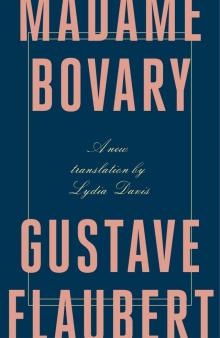 Madame Bovary
Madame Bovary The Temptation of St. Antony
The Temptation of St. Antony Bouvard and Pécuchet: A Tragi-comic Novel of Bourgeois Life, part 1
Bouvard and Pécuchet: A Tragi-comic Novel of Bourgeois Life, part 1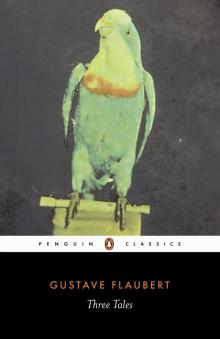 Three Tales
Three Tales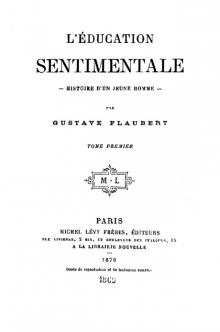 Education sentimentale. English
Education sentimentale. English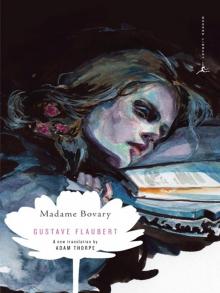 Madame Bovary (Modern Library)
Madame Bovary (Modern Library)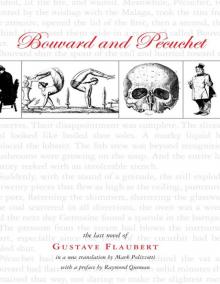 Bouvard and Pécuchet: A Tragi-comic Novel of Bourgeois Life, part 2
Bouvard and Pécuchet: A Tragi-comic Novel of Bourgeois Life, part 2 Sentimental Education; Or, The History of a Young Man. Volume 1
Sentimental Education; Or, The History of a Young Man. Volume 1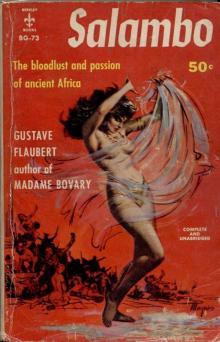 Salammbo
Salammbo Memoirs of a Madman and November
Memoirs of a Madman and November Complete Works of Gustave Flaubert
Complete Works of Gustave Flaubert